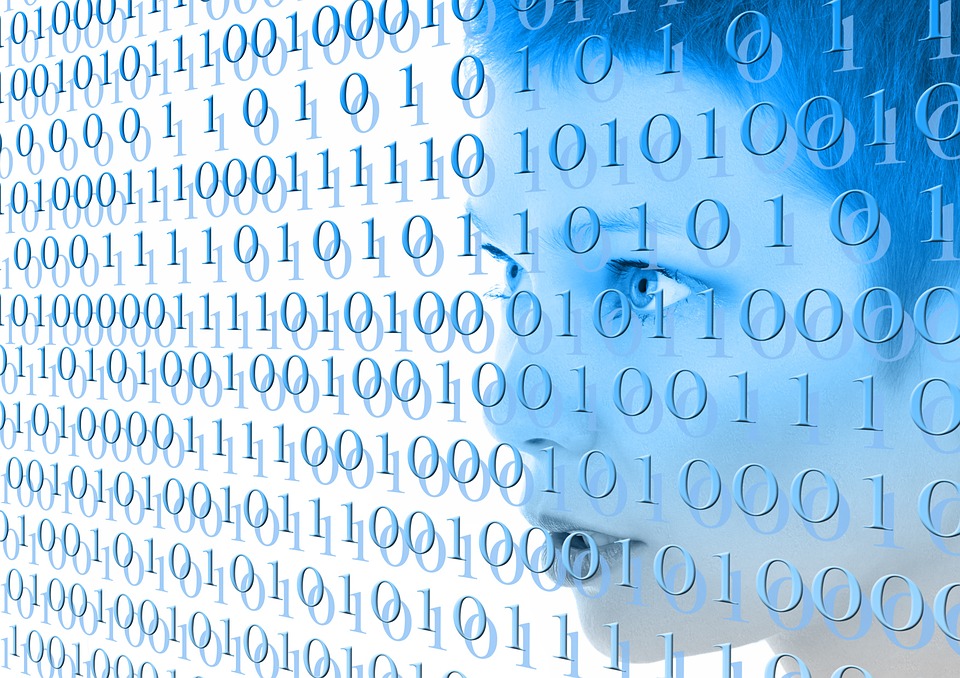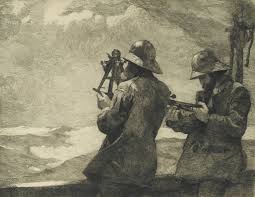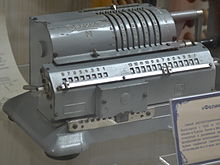When computers were people ...

Virtually any presentation of the history of computers begins with the mention of abacus invented in ancient Egypt. Depending on the details of the presentation, the following lists the inventions of the Chinese version of the abacus, various types of accounts with knuckles, calculators based on gears, the invention and industrial output of Tom de Kalmar calculators, the invention of the difference machine by Charles Babbage, etc. until the advent of modern computers. From abacus to iPad, the history of computers is represented as a chain of inventions of products made of wood, metal and other materials.
However, the first computers (computers) were humans! And this article is about how they turned from people into what we have now.
Computers are people
You can read about the first computers-people in Wikipedia in the section on the etymology of the English word “computer”.
')
According to the Oxford English Dictionary, the first known use of the word "computer" is found in the book of the English writer Richard Braithwaite, published in 1613. This use of the term refers to the person who performed some calculations. The word was used in English in the same meaning until the mid-20th century. From the end of the 19th century, the word began to acquire a more familiar meaning — a machine that performs calculations [1] .
So, the first computers were people. But what did they calculate?
In the book Gleick, James. "The information: a history, a theory, a flood" I found an interesting mention of them.
Starting from 1767 and up to its disbandment, the Council of England on the Definition of Longitude (Commissioners for the Discovery of the Longitude at Sea) issued the annual Nautical Almanac, which presented tables for determining the position of the Sun, Moon, stars, planets and satellites of Jupiter. The board was the customer of the almanac tables. The contractor was the famous Greenwich Laboratory.
 |  |
Over the next half century, a team of about thirty professionals prepared these tables. Their profession was called computer. The team consisted mainly of men, but for some time a woman worked for her — Mary Edwards of Ludlow, from Shropshire.
 | Memorial plaque in honor of the first "woman-computer" |
The calculation was "artisanal" (individual) production. For each calculation, a step-by-step algorithm was written. Great mathematical knowledge was not required for the work, but high concentration, attentiveness and accuracy were required. People capable of this were sought and selected throughout England.
In any case, the first computers, being people, made mistakes, so the same task was processed twice and by different people.
Computers-people quickly realized that you can save a lot of time if you just copy (rewrite) the results of each other's work. When the perpetrators were caught by the hand, the leadership turned (in modern terms) to a distributed computing architecture. Computers began to be specially recruited in remote settlements. All team members began to work exclusively at home.
To control the flow of information in the project, there was a special comparator-corrector of results (comparator).
Communication between computers and the comparator took place by mail, or by couriers who moved on foot or on horseback. Forwarding a single message took several days.
The introduction of logarithms into the practice of computing dramatically reduced the complexity of calculations, but the need for them has increased dramatically.
The experience of the “longitude of the team” was later used in large commercial projects to compile and publish a wide variety of tables. Computers appeared in the states of banks, insurance and trading companies.
Doesn't this remind you of anything?
By the way, in America, the first computer was hired relatively late, in 1892. This is evidenced by the (first of these) announcement of employment with the New York Times dated May 2, 1892. It read: The US Navy requires a computer (Computer wanted) with knowledge of algebra, geometry, trigonometry and astronomy [2] .
Mechanization of labor of people-computers
Arithmometers significantly cheapened the cost of calculations and, oddly enough, led to the emergence of an even greater number of people-computers in all developed countries.
In the USSR, accounting and control were the cornerstones of a planned economy. The profession of people-computers (calculators or technicians-calculators) has become widespread. People of this profession were trained in technical schools. In addition, this specialty was taught as additional accountants, technologists, etc.
My mother worked in the district Bureau of Technical Inventory in a large Siberian village. Along with bookkeeping, her task was to help technicians in calculating the cost of buildings and structures. For carrying out these calculations there were voluminous reference books with explanations, formulas and auxiliary tables. To speed up the calculations, the mass Soviet Felix arithmometer was used.

Arithmometer Felix was named in honor of the legendary founder of the Cheka Felix Dzerzhinsky. In total in the USSR several million of this device were produced. It cost about a tenth of the average monthly salary.
Having comprehended arithmetic, I helped my mother a lot and with pleasure in carrying out calculations on the “iron Felix”, as it was called by the people. In this sense, I myself a little man-computer, and even in the second generation (just kidding).
In large-scale productions and at the governing bodies, until the advent of computers (electronic computing machines) and personal computers, there were Machine Computing Stations (MSS ).

Machine-calculating station of the Order of Lenin's Trust ChMS: perforation group (machine punchers and controllers) January 1965 Author: V. Petrov. Location: Cherepovets and Cherepovets district. Sources: Cherepovets Museum Association [3]
Such a station existed even in our small village and made mainly calculations of labor success and salary calculations for employees of regional enterprises, collective farms and state farms. The accountants at these enterprises prepared primary statements, which MSS employees calculated on the calculators.
As I learned later, up to the 70s in the USSR there were also huge Machine Computing Centers, prototypes of later Computing Centers, already equipped with computers.
At the beginning of my career, I became acquainted with one well-known mathematician in narrow circles. After graduating from Moscow University, he was assigned to work at one very closed enterprise in the Urals (among the people, such enterprises were then called “boxes”). The employees of the huge department, where he got, were engaged in the calculation of “different ballistic trajectories”, as he put it (without specifying which ones). The calculation algorithms were complex, iterative methods were used. The task of my acquaintance consisted, in modern terms, in writing “programs” in a language similar to assembly language or bytecode.
The individual elementary steps of the algorithm were recorded in a special table in the left column. The results of the calculation should be recorded on the right. The language included the conditions for the end of calculations and transitions to the new place of the algorithm. Such a transition meant, as a rule, that further calculations had to be carried out by another specialist who owns another type of adding machine or a slide rule .

The department employed several hundred employees (mostly women). Equipment consisted of arithmometers of various types and slide rules.
Computation flows were always duplicated, so that the results of each step could be compared if necessary.
The employees of the department worked full-time, year after year they moved the pins of the adders, twisted their pens, moved the sliders of the logarithmic lines and wrote down the results of the calculations in tables, knowing almost nothing about the true purpose of their work. This continued until they were replaced by the first computers.
Instead of an epilogue
The history of IT, rooted in the minds of the general public and even of specialists, is as follows: Yes, the ancient Greeks and Chinese invented and used an abacus. And after that, different inventors like Babbage invented different curious, but little useful machines for the mechanical account. And only after the first computers were invented out of the blue in the middle of the 20th century, did the explosion-like development and application of information technologies based on programming begin.
In reality, everything was different. The first computers were people. This profession has become increasingly widespread. Due to the mechanization of computing, the productivity of people-computers is constantly growing, expanding and there are new areas of their work. Among them there was a specialization. At a certain stage, people appeared among people-computers who were engaged in what became later called programming. When the first industrial computers appeared, the market for their use was already formed. Replacing people-computers (in the USSR — calculators) with computers and then with personal computers took several decades.
Well, in the end - one wish. If you, dear reader, once again get angry for some reason on your computer, calm down and stop getting angry. Remember that just recently computers were human.
Title illustration: geralt
Source: https://habr.com/ru/post/354478/
All Articles